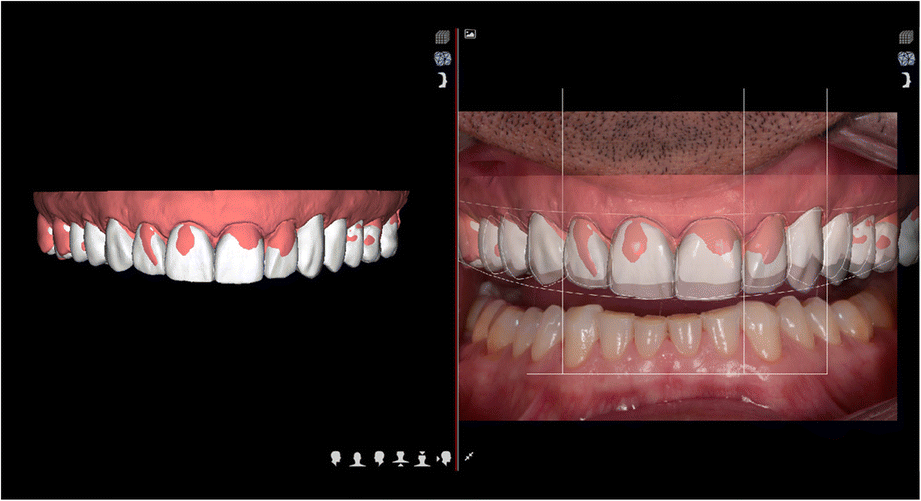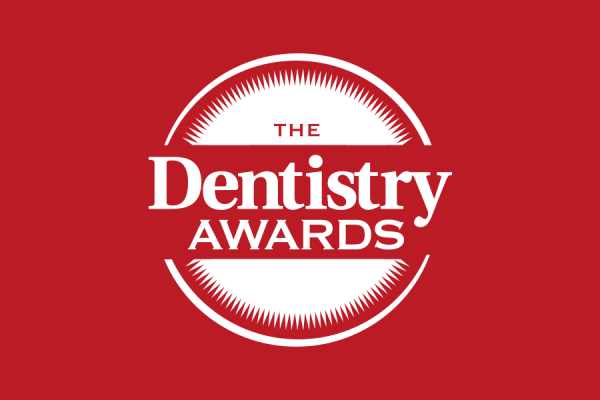Principles of Smile
Design
Cosmetic Dentistry Clinic , Preston – Lancashire
Smile Design
A perfect smile can change your whole image
Problems with your teeth can dramatically age your appearance—fixing these problems and enhancing your smile can leave it looking younger and more attractive.
Smiles can be affected by many things
There are many issues that can make people self-conscious about their smile, including:
- Stains or discolouring
- Tooth gaps
- Crooked teeth
- Broken teeth
Cosmetic dental care
Cosmetic dental care has revolutionized the way people see their smiles, as there is now no reason to live with teeth that are less than perfect. However, it is important to choose the right cosmetic dentist to treat you
The cosmetic consultation
This is your first opportunity to meet the team. At this relaxed and informative appointment we will listen to your concerns, assess your problems, offer options for treatment, answer your questions and design your new smile
Our team members are always happy to take time to answer questions or discuss treatments, so if you’re interested in either general or cosmetic dentistry then don’t hesitate to give us a call and arrange a consultation.
Components of a Smile
Smile aesthetics involves applying certain rules, tools, and strategies to the assessment of teeth and gum conditions in order for your dentist to decide on cosmetic and restorative procedures to correct and/or enhance your appearance. Some key components of a “pleasing” smile include:
Lips
The lips have been compared to a frame that sets off the image of your smile, encompassing your teeth and gums. Enhancing or correcting the shape, fullness, and symmetry of your lips can make your smile seem fuller.
Midline
The starting point of any smile design is the facial midline, an imaginary vertical line drawn between the front two upper teeth. For optimal esthetic value, the facial midline should be in the middle of the face.
Smile Line
Your smile line is the line created by the top of your lower lip. In an ideal smile line, the edges of your upper teeth should be parallel to your lower lip when you smile. The bottom of your lower lip should have the same line as the gums of your lower jaw.
Smile Line
Your smile line is the line created by the top of your lower lip. In an ideal smile line, the edges of your upper teeth should be parallel to your lower lip when you smile. The bottom of your lower lip should have the same line as the gums of your lower jaw.
Incisal Embrasures:
The spaces between the edges of the teeth (embrasure spaces) follow a pattern that develops between the central incisors and then progress sideways. These silhouette patterns, created by the edges and separations between the upper front teeth against the darker background of the mouth, help accentuate an attractive smile.
Colour
Typically, the upper central incisors are the lightest and brightest teeth in your smile. The upper side teeth are similar in color (hue) to that of the central incisors, but generally slightly lower in brightness (value)
The spaces between the edges of the teeth (embrasure spaces) follow a pattern that develops between the central incisors and then progress sideways. These silhouette patterns, created by the edges and separations between the upper front teeth against the darker background of the mouth, help accentuate an attractive smile.
Years of Experience
Completed Cosmetic Cases
Smile Design Principles
We understand that you may be feeling anxious about your consultation or treatment
and it’s our aim to put you at ease. Our dentists will take the time to understand what is important to you about your dental care and what you would like to achieve. Sedation can be provided for patients who suffer from anxiety.
We know from many years of experience
that patients often need reassurance and peace of mind to enable them to place their trust and confidence in their dentist before they embark upon a course of treatment. It may help you to know that our clinical team is amongst some of the most experienced and well-qualified dentists in the U.K.
A lifelong commitment to patient care
ensures we provide consistent, appropriate and ethical treatments which will help our patients to maintain healthy teeth and gums for life. In fact we have looked after many generations of the same families over the years.
Awarded Best Dentists in Lancashire
How often have you looked in the mirror, wishing you had a better smile? Few of us have naturally perfect teeth, but with the help of the experienced cosmetic dentists at Lane Ends Dental Practice, we can help create a natural healthy smile to be proud of.

Call For a Consultation
01772 – 726932
We craft beautiful, functional and natural looking smiles
Principles of Smile Design
What is considered beautiful is based on standard aesthetic principles about balance and symmetry between teeth, eyes and the rest of the face. In order to design the ideal smile, we follow some important principles to ensure we give you the best aesthetic smile.
There are 10 aesthetic and scientific principles of smile design in cosmetic dentistry.
1. Smile Line
The first aspect of a patient’s smile that we look at is the smile line. It is essentially the smile pattern. While there are as many different smiles as there are people, they can generally be categorized as one of three basic smile patterns: the Commissure smile, the Cuspid smile, or the Complex smile.
The Smile line which connects the edges of your teeth should ideally follow the curve of your lower lip and is generally radially parallel to the horizon. The teeth bite-line shall follow the curve of the under-lip. The upper teeth have the shape of a “gull.” A curved smile line makes you smile younger but to flat smile line, the teeth will have more a worn-out look and make you older.

2. Relative Dental Proportion
Three measurements must be symmetrical with regard to the top 6 teeth, known as the “social six”. Combined width of 2 front teeth should be the same length from midpoint to either 3rd tooth cuspid. Front 2 teeth should have combined width to height ratio, Golden in proportions, being 1 in height and 1.6 in width. The golden section is the geometrical proportions that exist everywhere around us. A beautiful smile has the proportions close to the golden section between teeth: 0.6 – 1.0 – 1.6
3. The dominance of the Central Incisors
Under this principle, we look at the width to height proportions of the maxillary central incisors. Ideally, the width should be 75% to 80% of the height of the individual teeth. We also judge how symmetrical they are, and whether the mid-line runs perpendicular. Finally, we look at whether the incisal edges run parallel to the interpupillary and the incisal display.

5. Progression of Incisal Embrasures
After analyzing a patient’s silhouettes, we look at the progression of their incisal embrasures. As one of the elements that can make or break a smile, this progression should ideally be a gradual one. Embrasures are the natural little triangular spaces that you see between the tips of your teeth. We create artistic natural embrasures to give you your dream smile.
4. Smile Width – Silhouettes
In looking at a patient’s silhouettes we look to see that the teeth have a consistent curve as they progress into the back of the mouth. Specifically, we look at three measurements:
- Anterior – distal of central to distal of lateral
- Posterior – cuspid to premolars and molars
- Decreasing gradation
In the case of a narrow smile, your front teeth will appear to stand alone as the side teeth are in the shadows.

Symmetry
Symmetry is the key to smile design, and we look at the symmetry of the teeth, gums, and lips in relation to your whole face.
Tooth Character
mile design has the flexibility to design ‘delicate’ smiles with small rounded tooth profiles, through to ‘confident’ smiles with broad, rectangular shapes. Older teeth tend to be worn on the tips and flatter on the tooth body, making them look squarer and flatter.
Younger teeth are rounder at the tip and body. When we are redesigning the whole smile, we can choose together the new look that you would like or we can choose to copy your original teeth shape.
Smile Width
The teeth towards the back of the mouth can always be seen in an attractive smile.
In a narrow smile, the back teeth are often in shadow (this is called negative space), thus creating the appearance of shadows at the corners of the mouth and front teeth that appear to stand out.
Gum Curvature
The most attractive smiles possess a symmetrical gum line which follows the curvature of the upper lip, and the gum of each tooth will be gently arced too.
Colour
The colour of each tooth should be even and should match every tooth in the smile. At the beginning of designing your new smile, we carefully plan with you which shade of white you would like your new smile to be.
There are many shades of white, and each person has their own idea of the shade that they would like to be. Natural enamel can be whitened with professional teeth whitening, and dental restorations can be made in every shade of white to match the adjacent teeth, however, once dental restorations are made, their colour is fixed.
Smile Line
The smile line connects the tips of your top teeth. The most attractive smiles possess tooth tips which gently follow the curve of the lower lip.
A flat smile line suggests aged worn teeth, while a curved smile line makes you and your smile look younger.
.
Horizontal Alignment
A smile line parallel to the imaginary horizontal of the line between the eyes is often thought to be most attractive, and even as most faces are asymmetrical, this illusion of horizontal alignment can be created.
The Golden Proportion Rule
Beautiful teeth are in perfect proportion to each other. As you look at a perfect smile from the front, the teeth will look proportionally smaller as each tooth is viewed further back in the mouth from the midline.
This proportion is 1: 0.65. The lateral or second incisor next to the central incisor should be 65% of the width of the central incisor.
Lip Proportion
The lips are supported by the teeth underneath.
If there is asymmetry of the underlying teeth, or if teeth are missing, then the lips can be asymmetrical or “fall in” or be pushed out. Ideally, the lips will be in a 1:1.6 Golden Proportion of the upper: lower lip.



